
Solar Panels Nova Scotia Cost Calculator Instant Quote
August 22, 2025
Solar Panels in Edmonton Cost, Rebates for Installing it Into Your Roof?
August 28, 2025The first question I get when I mention solar power in the Arctic is, ‘Does that even work?’ It’s a fair question. We picture long, dark winters and endless snow. But after more than a decade in this industry, I can tell you the answer is a resounding yes. But the data and the real-world projects tell a different story. The potential for solar power in Canada’s northern communities isn’t just a hopeful dream; it’s a practical reality that is already unfolding.
Let’s break down how solar energy works in the far north, the real benefits it brings, and the challenges that still need to be solved.
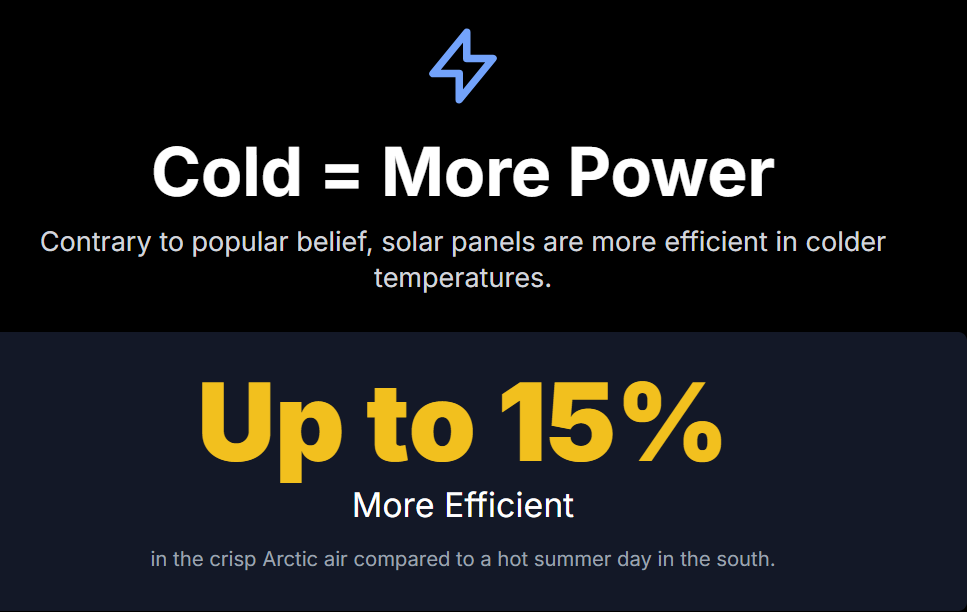
Can Solar Panels Actually Work in the Arctic?
The short answer is yes, they work surprisingly well. The common misconception is that solar panels need heat to produce electricity. In reality, they thrive in the cold.
How Does Solar Irradiance in the Arctic Compare to Other Regions?
Solar irradiance is the amount of solar energy that reaches a specific area. While the sun’s angle is lower in the Arctic, a few key factors work in its favor. During the summer months, the region experiences the “midnight sun,” with up to 24 hours of continuous daylight. This extended period of sunlight allows for prolonged energy generation.
Furthermore, the clean, crisp Arctic air has less pollution and haze to block the sun’s rays. Another significant boost comes from the albedo effect—the reflectivity of snow and ice. Snow-covered ground can reflect sunlight back onto the panels, increasing their total energy absorption. Studies have shown this effect can boost energy production by up to 25%, especially with bifacial panels that capture light from both sides.
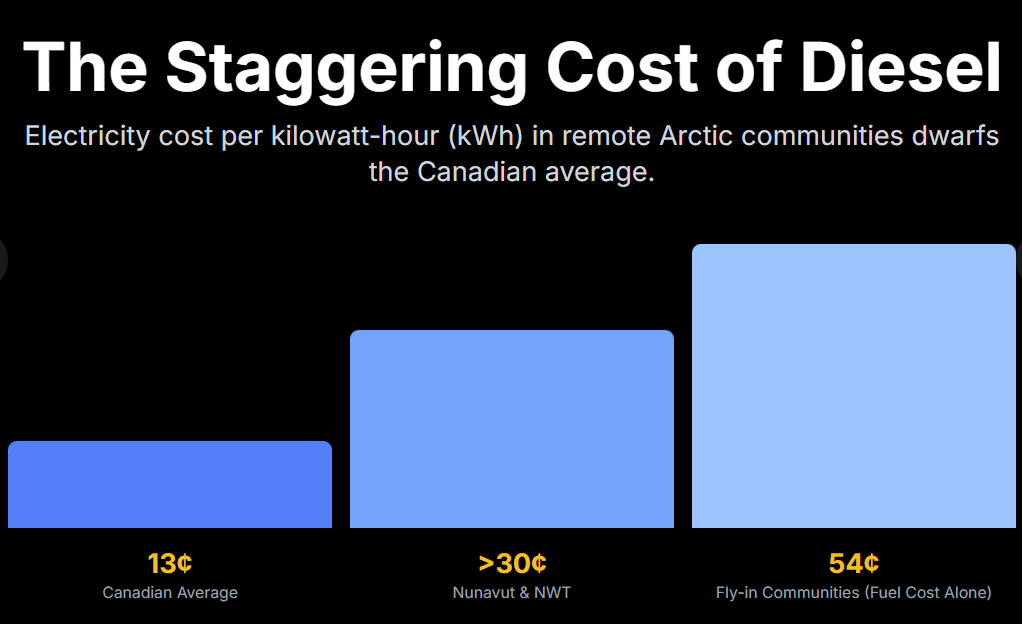
What Arctic Conditions Affect Solar Energy Production?
It’s a fact that solar panels are more efficient in cold weather. Heat is actually a byproduct of energy production and reduces a panel’s efficiency. Most solar panels are tested at a standard temperature of 25°C (77°F). For every degree above this, they lose a small percentage of their efficiency.
Conversely, for every degree below 25°C, they gain efficiency. Think of it this way: a solar panel on a hot summer day in Toronto is losing some power to the heat. That same panel in the crisp, cold air of the Arctic is in its ideal element, generating up to 15% more electricity from the same amount of sunlight. The cold helps the panel’s semiconductor materials conduct electricity with less resistance.
How Does the Midnight Sun Impact Solar Power?
The midnight sun is a game-changer for Arctic solar. With 24 hours of daylight for several months, solar arrays can generate power around the clock. This creates a massive surplus of energy during the summer, far exceeding what a similar-sized system could produce in a southern location with shorter days. This period of intense generation is key to making solar viable, as it provides the energy that needs to be stored for the dark winter months.
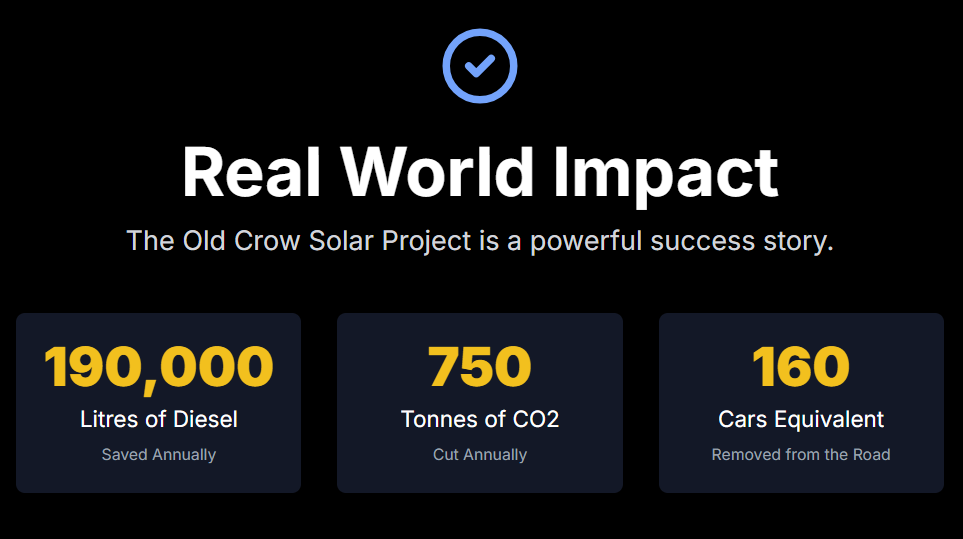
What Are The Benefits Of Solar Power In Northern Communities?
For the roughly 200,000 people living in Canada’s remote northern communities, energy is a lifeline, and it comes at a steep price. Most of these communities are not connected to the main electrical grid and rely on diesel generators for power.
Reducing Reliance on Diesel Generators and Fossil Fuels
Shipping diesel to remote locations is expensive and logistically complex. Fuel is often flown in or transported on winter ice roads, making the supply chain vulnerable to weather and other disruptions. By generating electricity locally with solar, communities can significantly reduce their dependence on these risky and carbon-intensive fuel deliveries.
Lowering Emissions and Promoting Green Energy
Diesel generators produce greenhouse gases and other air pollutants like nitrogen oxides and particulate matter, which impact local air quality and contribute to climate change. Shifting to solar power directly reduces these emissions, helping Canada meet its climate targets and creating healthier living environments for residents.
Cost Savings from Switching from Diesel to Solar Energy
The cost of electricity in the North isn’t just a number on a bill; it’s a major burden on families and communities. While the average Canadian might pay around 13 cents per kilowatt-hour (kWh), residents in Nunavut and the Northwest Territories can face rates over 30 cents/kWh. This impacts everything, from the cost of groceries to funding for local services. In some fly-in communities, the fuel cost alone for diesel generation can be as high as 54 cents/kWh.
While solar installations have a high upfront cost, they eliminate the need for fuel. Over the 25+ year lifespan of a solar project, the savings on diesel can be enormous, freeing up community funds for other essential services.
How Are Solar Panels Being Used in the Arctic Today?
This isn’t just theory; solar projects are already making a difference across the Arctic.
Case Study: The Old Crow Solar Project
In Old Crow, Yukon, a fly-in community home to the Vuntut Gwitchin First Nation, a groundbreaking solar project is proving the concept at scale. The Sąąʼąą Trʼee Renewable Energy Project is a 940-kilowatt solar array paired with a large-scale battery storage system.
Since becoming fully operational in 2021, the project has allowed the community to turn off its diesel generators for up to 100 days a year during the summer. This reduces diesel consumption by about 190,000 litres annually and cuts CO2 emissions by 750 tonnes—the equivalent of taking 160 cars off the road. The project is owned and operated by the First Nation, generating revenue and creating local jobs.
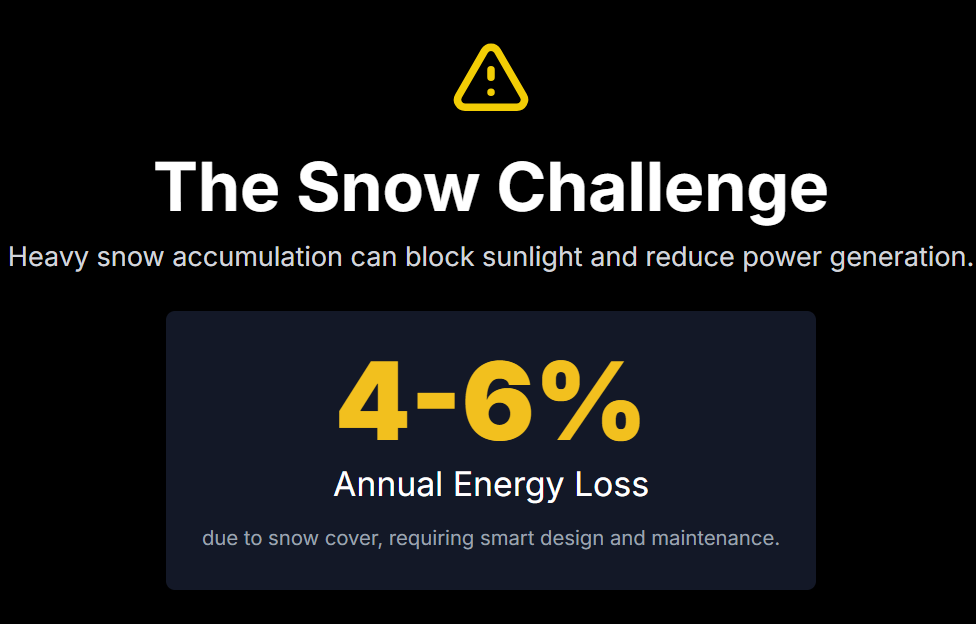
Solar Project in Svalbard: Benefits and Challenges
Even further north, at 78°N in the Norwegian archipelago of Svalbard, a solar project at the Isfjord Radio hotel is pushing the limits of what’s possible. The project uses bifacial panels to take advantage of reflected light from the snow and includes both battery and thermal storage systems.
The system is designed to provide up to 70% of the hotel’s energy needs, demonstrating that solar can drastically reduce diesel use even in the high Arctic. However, it also highlights the challenge of the polar night—when the sun doesn’t rise for months. During this period, the facility still relies on diesel, underscoring the critical need for long-duration energy storage.
What are the Challenges of Implementing Solar Power Systems in the Arctic?
The Arctic presents unique obstacles that require careful planning and innovative solutions.
Dealing with Snow and Ice on Solar Panels
Snowfall is an obvious challenge. While light, dry snow often slides off the smooth, angled surface of solar panels, heavy, wet snow can accumulate and block sunlight. Studies from the Northern Alberta Institute of Technology (NAIT) have found that snow can reduce annual energy production by about 4-6%.
For critical off-grid systems, this loss can be significant. Solutions include installing panels at a steeper angle to help shed snow, using ground-mounted systems for easier manual cleaning, and developing heating technologies to melt snow, though the latter consumes energy.
Tip for Arctic Installations: Ground-mounting solar arrays instead of placing them on rooftops makes maintenance and snow removal much safer and more manageable in harsh winter conditions.
The Need for Reliable Energy Storage Solutions
This is the biggest piece of the puzzle. To achieve true energy independence, communities need a way to store the massive amounts of solar energy generated during the summer to power them through the dark winter. Lithium-ion batteries, like those used in Old Crow, are effective for short-duration storage (storing daytime energy for overnight use).
However, storing energy for months at a time is a much larger technical and financial challenge. Emerging technologies like flow batteries and hydrogen storage may offer long-term solutions, but they are still in the early stages of deployment in such harsh environments.
The High Costs of Solar Installations in Remote Arctic Communities
Building anything in the Arctic is expensive. The cost of transporting materials and skilled labor to remote sites significantly increases the upfront investment for a solar project. While the average cost of solar in Canada is around $2.50 to $3.50 per watt, costs in the North can be much higher. Federal and territorial government support through programs like the Canada Greener Homes Grant is crucial to making these projects financially viable for smaller communities.
What is the Energy Future in the Arctic?
The transition away from diesel is a marathon, not a sprint. The most practical path forward is a hybrid approach.
Integration of Solar Power into Existing Energy Systems
For the foreseeable future, the most reliable model involves integrating solar and battery storage with existing diesel generators. Smart grid technology can manage these different energy sources, using solar whenever it’s available and turning on the diesel generators only when needed—as a backup during long, cloudy periods or in the winter. This hybrid model immediately reduces diesel consumption while ensuring a reliable power supply.
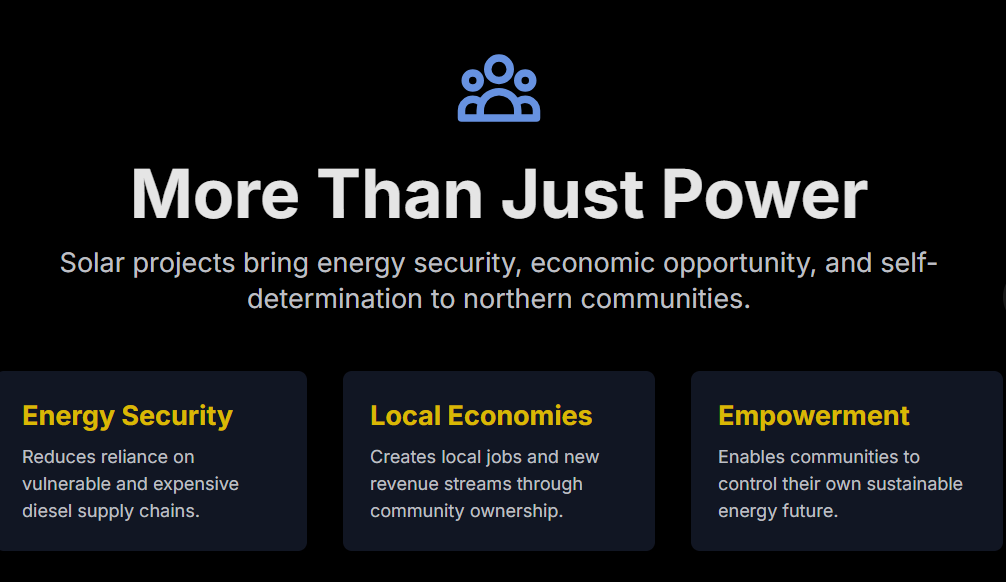
How Are Arctic Communities Benefiting from Solar Energy?
The benefits go beyond just kilowatts and emissions.
- Economic Development: Projects like the one in Old Crow create local jobs during construction and for ongoing maintenance. They also provide a new revenue stream for the community through electricity purchase agreements.
- Energy Security: Local energy production reduces reliance on fragile supply chains, giving communities more control over their energy future.
- Empowerment: Community-owned renewable energy projects are a powerful form of self-determination, allowing Indigenous and northern communities to lead their own transition to a sustainable future.
The role of the Qulliq Energy Corporation in Nunavut for developing Renewable Energy In The Arctic
In Nunavut, the Qulliq Energy Corporation (QEC) is the territory’s sole power utility. As the operator of 25 diesel power plants, its role is critical. QEC is actively involved in connecting new solar projects, such as recent installations in Clyde River, Arctic Bay, and Grise Fiord.
The core challenge for a utility like QEC is balancing the old with the new. Their diesel grids were built for steady, predictable power. Solar energy, which varies with the sun, introduces a new variable. The task now is to modernize these grids and create fair rules so community-led solar projects can plug in easily, helping to reduce diesel use without risking the stability of the power supply.
Ultimately, the question isn’t whether solar panels can work in the Arctic—they can, and they do. The real question is how we can accelerate their adoption. It requires a combination of government investment, innovative technology (especially in energy storage), and true partnership with the northern communities who stand to benefit the most. The untapped solar potential in Canada’s North is immense. This isn’t just about building solar farms; it’s about building a more resilient, independent, and affordable future for northern communities. It’s a perfect example of how Canada goes solar, one community at a time.




